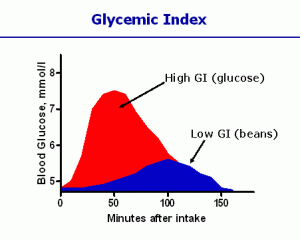The Glycemic Index
 When it comes to controlling diabetes, it is crucial that you understand The Glycemic Index. So, what is it?
When it comes to controlling diabetes, it is crucial that you understand The Glycemic Index. So, what is it?
The Glycemic Index measures how much fluctuation a food causes in your blood sugar levels. Whether you are a type 1 or type 2 diabetic, this is important to understand. The scale works like golf. The lower the score, the better the food is for you. Foods that score 55 or less are considered low glycemic, and will impact your blood sugar less than foods that are higher.
What Happens When You Eat Foods That Are High On The Glycemic Index?
When you eat foods that score high on the glycemic index, such as highly processed pastas and rice, candy, fried foods, and anything with a lot of sugar, your blood sugar spikes. That is problem number 1. Now what happens later when the sugar high runs out? You crash! Your body does not want to deal with those swings, especially if you are diabetic. You will experience blood sugar swings, energy swings, hunger pains and cravings when your diet consists of high glycemic foods.
What Happens When You Eat Foods That Are Low On The Glycemic Index?
Foods that are low on the glycemic index cause less fluctuation to your blood sugar levels. This makes life a lot easier on your body. Your blood sugar will remain more steady throughout the day. Your energy level, and even your mood will stay more steady. You will have less cravings and hunger pains.
Watch This Quick Video On The Glycemic Index



Leave a Reply